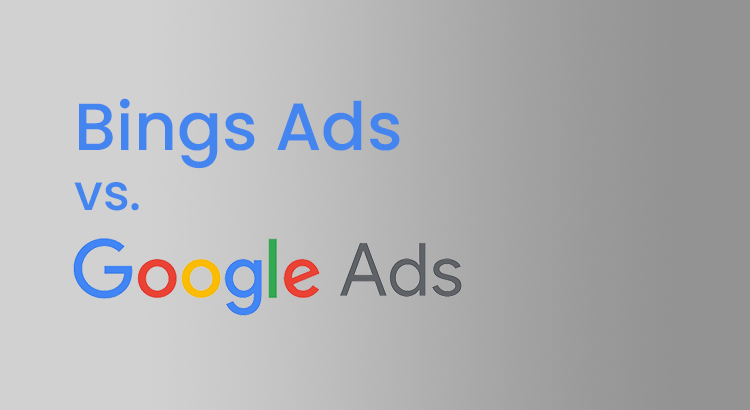Making the decision between Bing Ads vs Google Ads is crucial for companies looking to increase their visibility and impact. This article explores the critical differences between the two platforms. By studying the differences, businesses can make informed decisions tailored to their specific goals and target audiences.
Bing Ads
Bing Ads provides unique advantages, especially for businesses targeting specific demographics. With a reach that includes 53 million desktop searchers unreachable by Google, Bing offers a distinct audience segment.
The platform’s targeting settings, including LinkedIn profile targeting, cater to specific marketing needs, albeit with fewer options than Google Ads.
Google Ads
Google Ads takes the lead in reach, with access to a broad audience through its Display Network and Search Network. Its targeting options are extensive, covering demographics, affinity, in-market, custom intent, and more.
While ad copy flexibility is greater on Google Ads, allowing for more experimentation, businesses should consider the platform’s higher costs.
Learn More: Why Is Google Ads Important for Businesses?
Difference Between Bing Ads and Google Ads
1. Reach
Google Ads dominates the reach game with its expansive Display and Search Networks, reaching 90% of online users.
While Bing Ads captures less than 5% of the search engine market, it offers unique advantages, such as reaching 53 million desktop searchers that Google can’t.
2. Demographics
Bing users are typically married (43%), aged 35-54 (40%), and earn higher incomes (33% above $100,000). In contrast, Google users are generally younger and more diverse.
Advertisers should choose based on their target audience’s demographic profile for optimal results.
3. Targeting
Google Ads offers extensive audience and content targeting options, including demographics, affinity, in-market, custom intent, and more.
Bing Ads, while providing fewer options, has a unique advantage with LinkedIn Profile Targeting, making it beneficial for account-based marketing strategies.
Useful Article: Mastering Google Ads Retargeting: Tips for Crafting Effective Campaigns
4. Keyword Targeting
Both Google Ads and Bing Ads offer similar keyword targeting options, including broad match, phrase match, exact match, and negative keywords.
The main difference is the broader search market dominance of Google, providing advertisers with more opportunities to reach their target audience.
5. Ad Copy
Google Ads provides more flexibility in ad copy with additional headlines and descriptions, allowing for more A/B testing.
Bing Ads, with slightly more restrictive character limits, may slow down testing. Advertisers should consider their preferred ad copy strategy when choosing between the platforms.
6. Cost
Bing Ads generally costs businesses 20-35% less than Google Ads, according to a study. However, cost should not be the sole determining factor.
Advertisers need to evaluate performance and return on investment to make an informed decision between the platforms.
Related Article: How Much Does Google Ads Cost?
7. Cost per Click (CPC)
The average CPC for Bing Ads is $1.54, while Google Ads ranges from $1 to $2. While Bing Ads offers a lower CPC, it’s crucial for businesses to monitor performance, as a lower cost may not necessarily lead to better results.
8. Click-Through Rate (CTR)
Bing Ads boasts a higher average CTR at 2.83%, compared to Google Ads with 1.91% on the Search Network and 0.35% on the Display Network.
Advertisers choosing Bing Ads should focus on creating compelling ads to capitalize on the higher CTR.
9. Conversion Rate
Google Ads holds a higher average conversion rate at 3.75%, compared to Bing Ads at 2.94%.
Despite the lower conversion rate, Bing Ads can still be a viable option, depending on an advertiser’s goals and the specific characteristics of their target audience.
Conclusion of Bing Ads (Microsoft Ads) vs Google Ads
Choosing between Bing Ads or Google Ads depends on the distinct business objectives, target demographics, and budget considerations at hand. Businesses should carefully analyze their audience and campaign objectives to make an informed decision that aligns with their advertising strategy.


